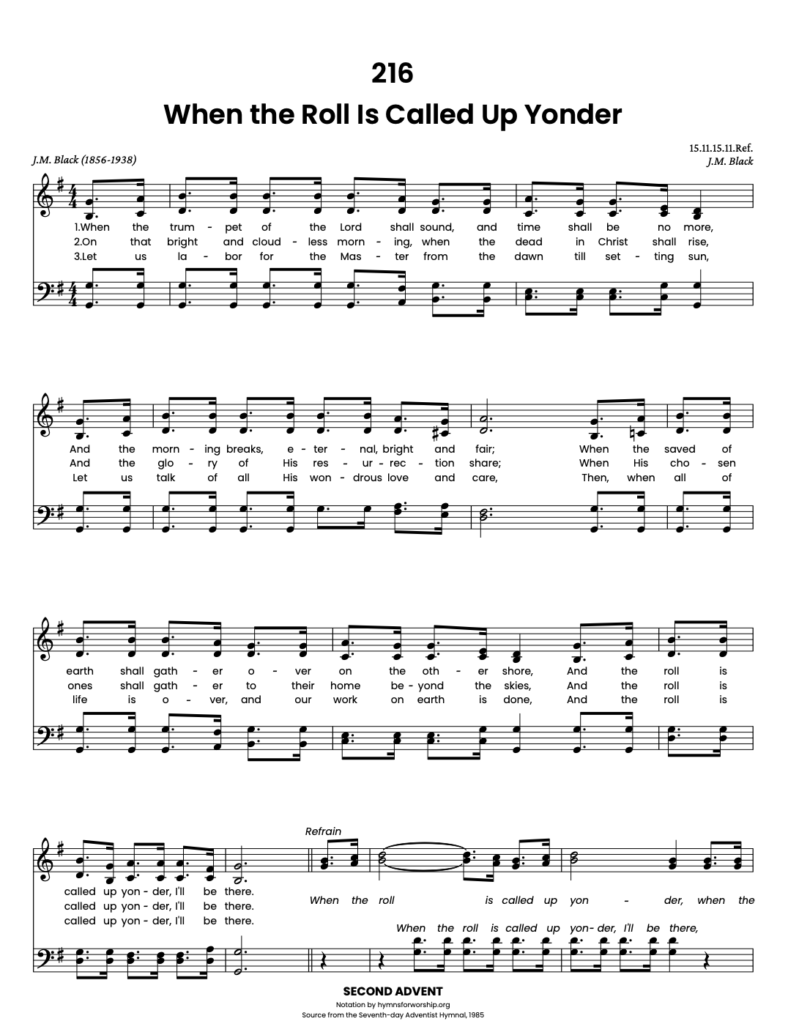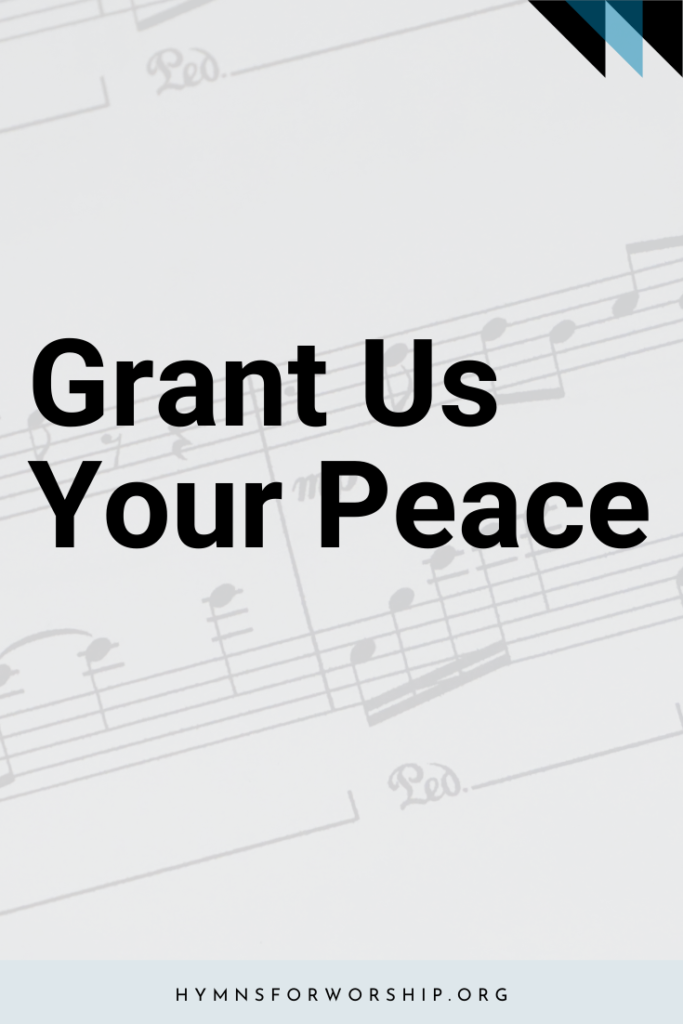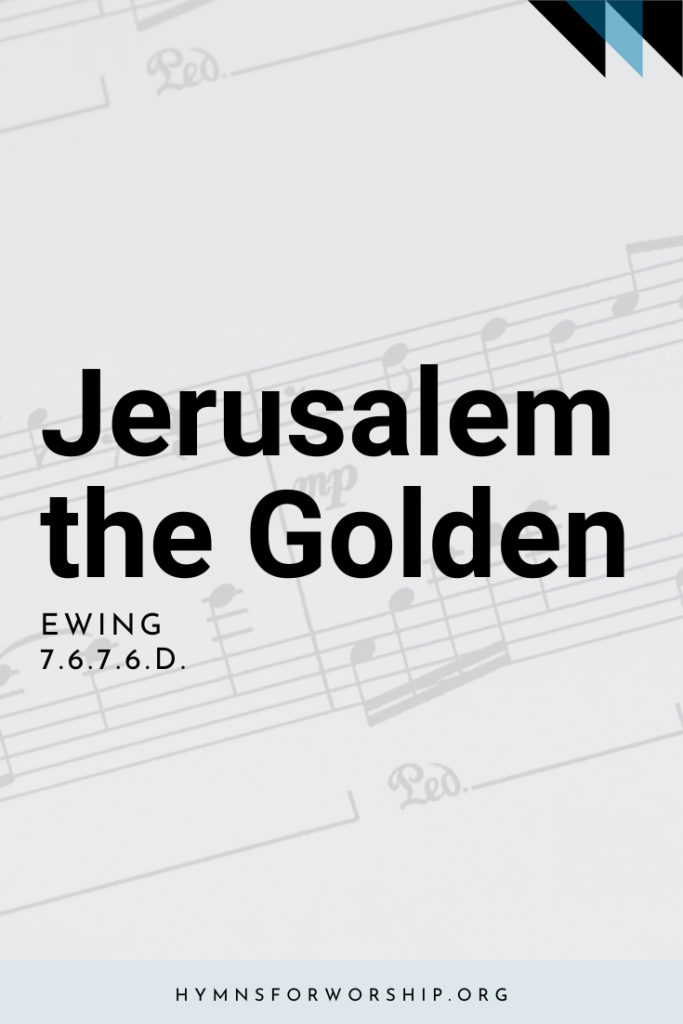JESUS CHRIST >> SECOND ADVENT
SDAH 216
When the trumpet of the Lord shall sound,
and time shall be no more,
And the morning breaks, eternal, bright and fair;
When the saved of earth shall gather
over on the other shore,


Text
1
When the trumpet of the Lord shall sound,
and time shall be no more,
And the morning breaks, eternal, bright and fair;
When the saved of earth shall gather
over on the other shore,
And the roll is called up yonder, I’ll be there.
Refrain
When the roll is called up yonder,
When the roll is called up yonder,
When the roll is called up yonder,
When the roll is called up yonder, I’ll be there.
2
On that bright and cloudless morning,
when the dead in Christ shall rise,
And the glory of His resurection share;
When His chosen ones shall gather
to their home beyond the skies,
And the roll is called up yonder, I’ll be there.
3
Let us labor for the Master
from the dawn till setting sun,
Let us talk of all His wondrous love and care,
Then, when all of life is over,
and our work on earth is done,
And the roll is called up yonder I’ll be there.

Hymn Info
Biblical Reference
(a) 1 Cor 15:52 (b) 1 Thess 4:16
Author
J.M. Black (1856-1938)
Metrical Number
15.11.15.11.Ref.
Composer
J.M. Black
Theme
SECOND ADVENT

Notes
Make each hymn more meaningful with these helpful tools: Short, ready-to-use hymn introductions for church bulletins, multiple ways to introduce a hymn based on your worship theme and in-depth history and insights to enrich your song service.





